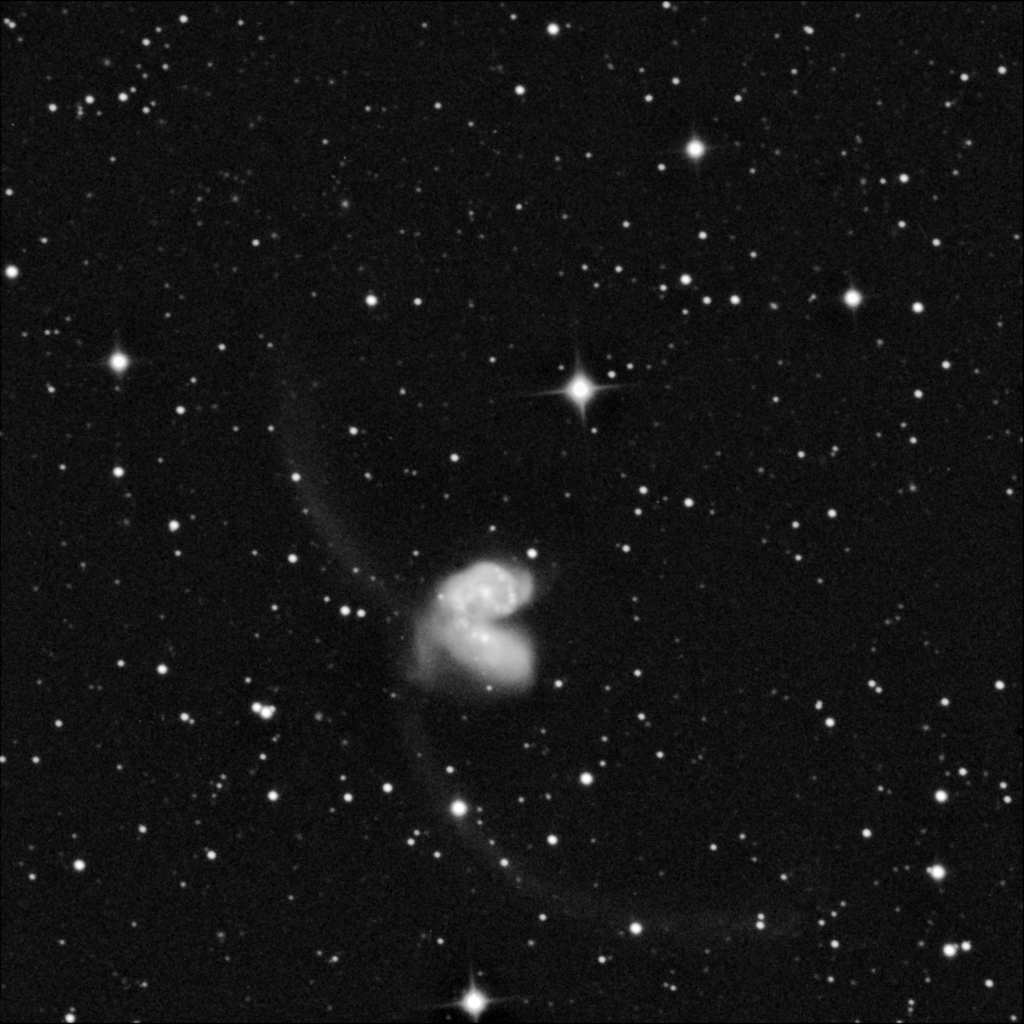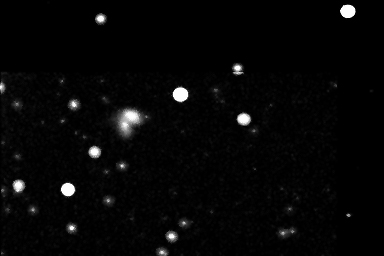
Combination of 2, 1 minute images.
Meade 416XTE CCD. 5" f/5 refractor at prime focus.

NGC 4038/4039 is one of the best examples of an interacting pair of galaxies. It is known as the "Antennae" for the faint trails of stars that have been flung out of the two galaxies during the merger. The alternative names of the "Ring-Tail" and the "Comma", are descriptive of the appearence in the telescope. The galaxies are easily visible in an 8" telescope, their appearence being very similar to the above image.
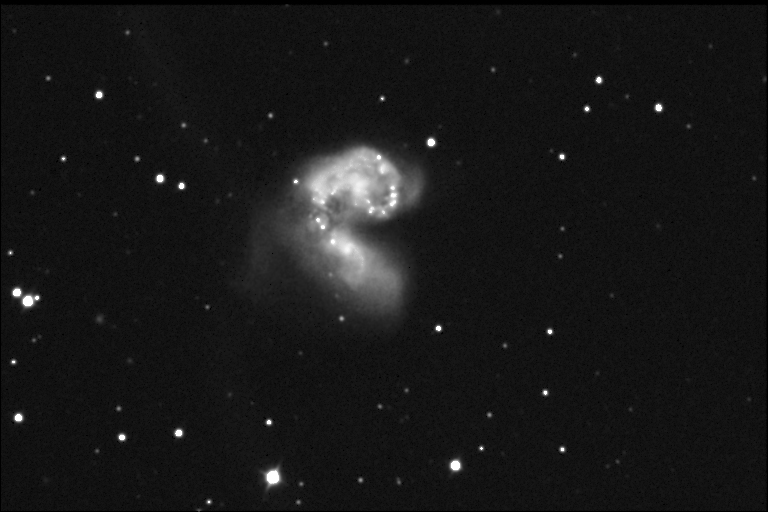
In addition to having flung out millions of stars, the merger has also triggered massive amounts of star formation. The regions where this is happening are visible in the above image as bright knots in the galaxies. It is worth pondering just what is happening there. Each of the bright knots are in fact, thousands of extremely massive, hot and bright stars!
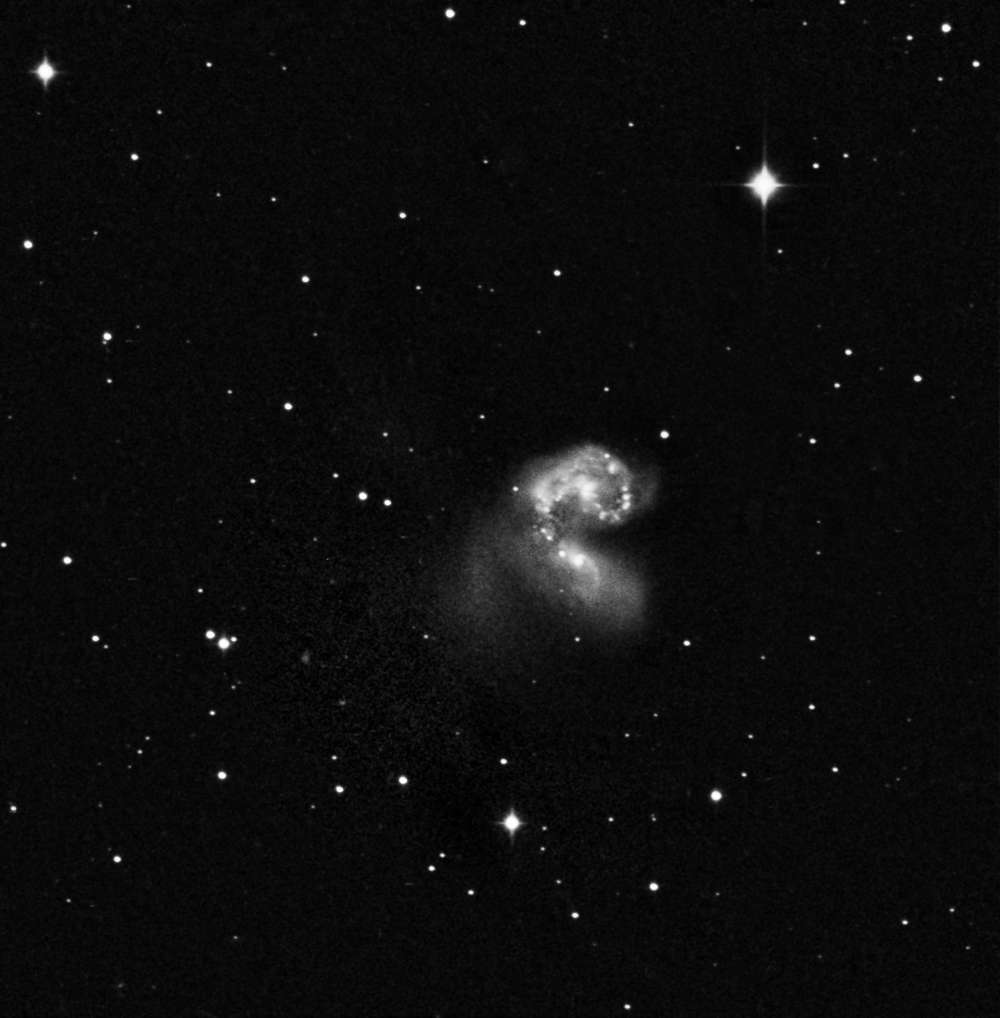
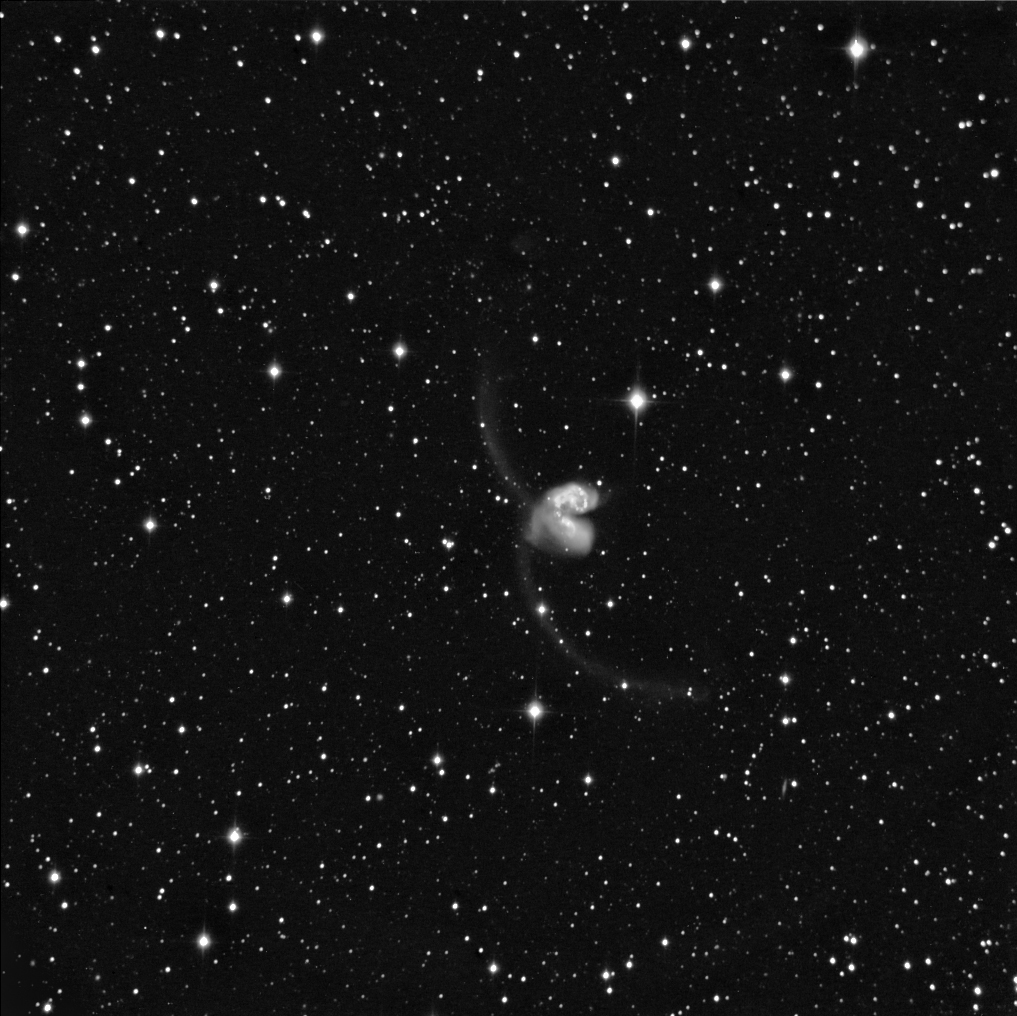
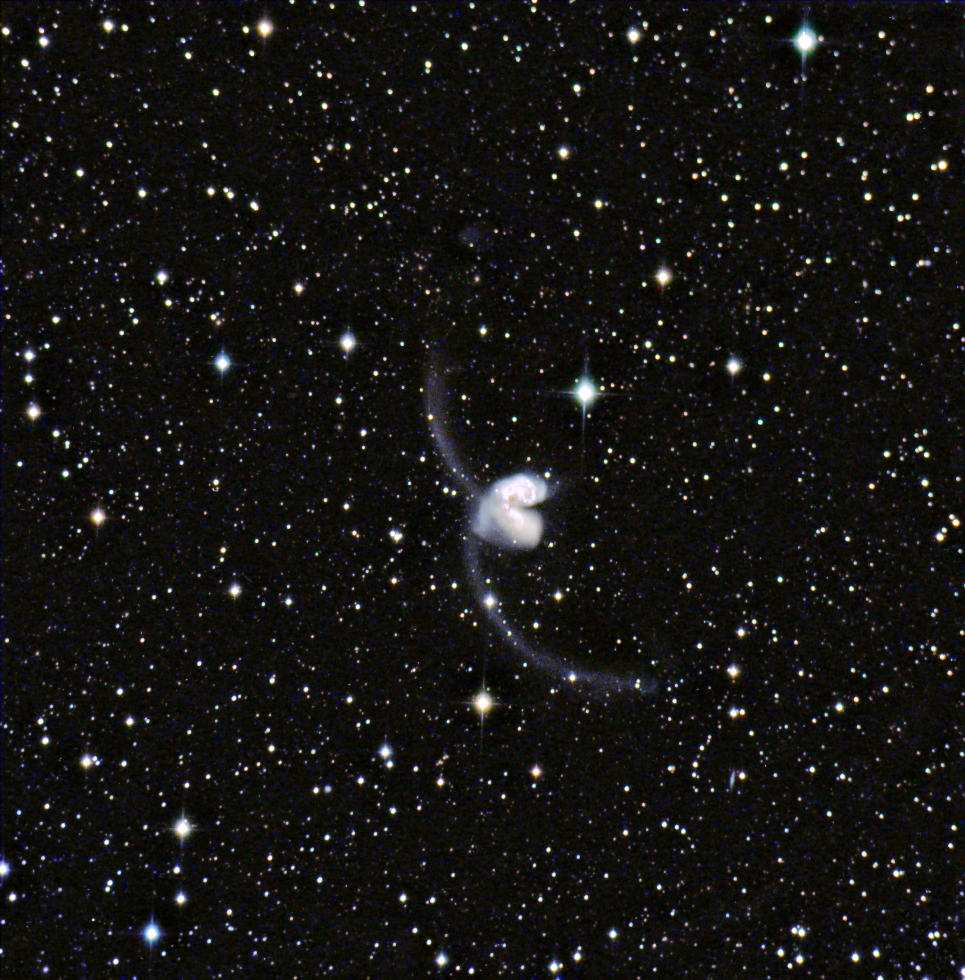
The elongated streak towards the lower right is the 16.4 magnitude galaxy PGC 37910.
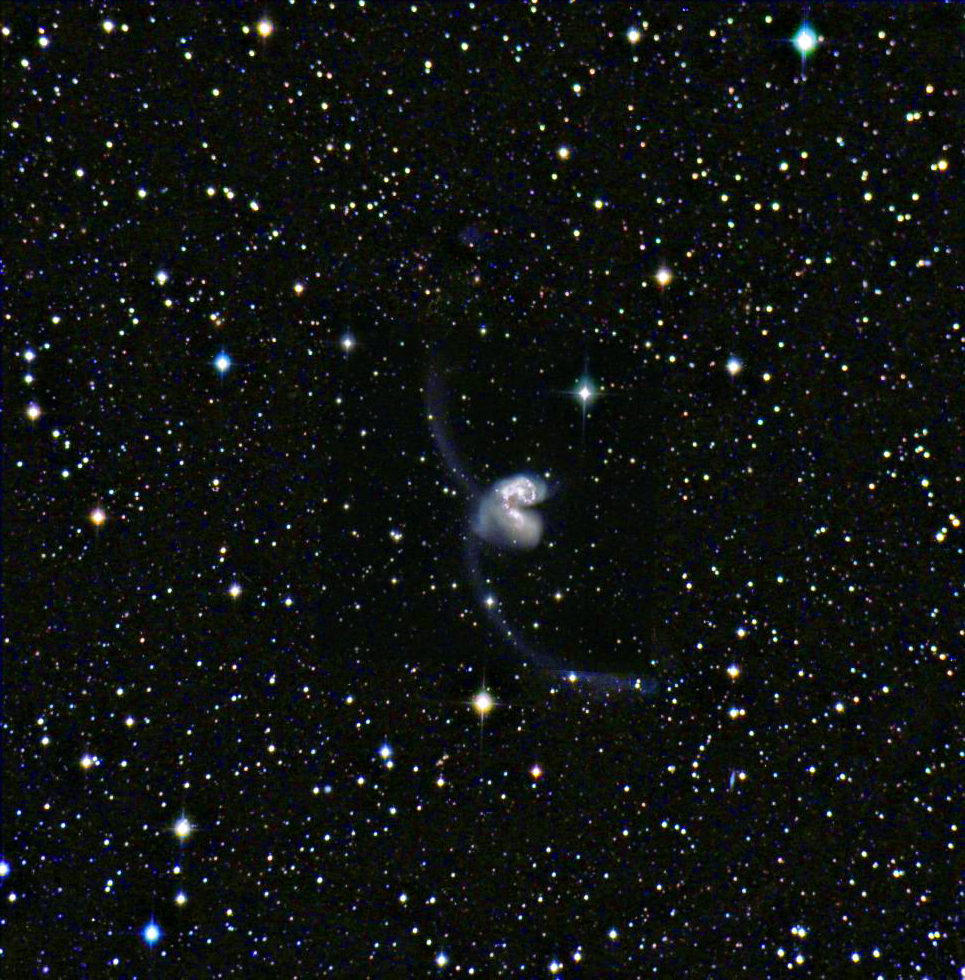
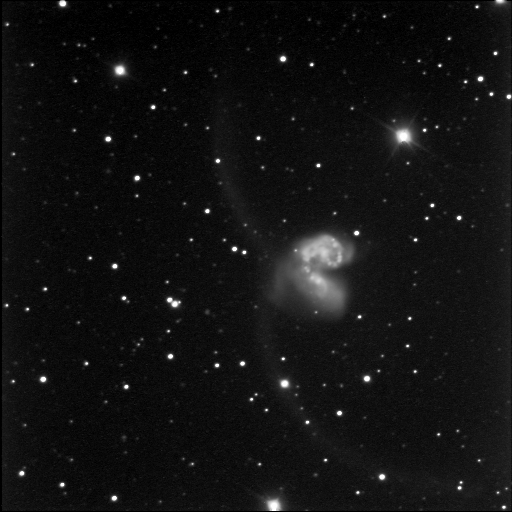
The wider field and greater sensitivity of the ST-9 enables the extreme length of the "antanae" to be shown
